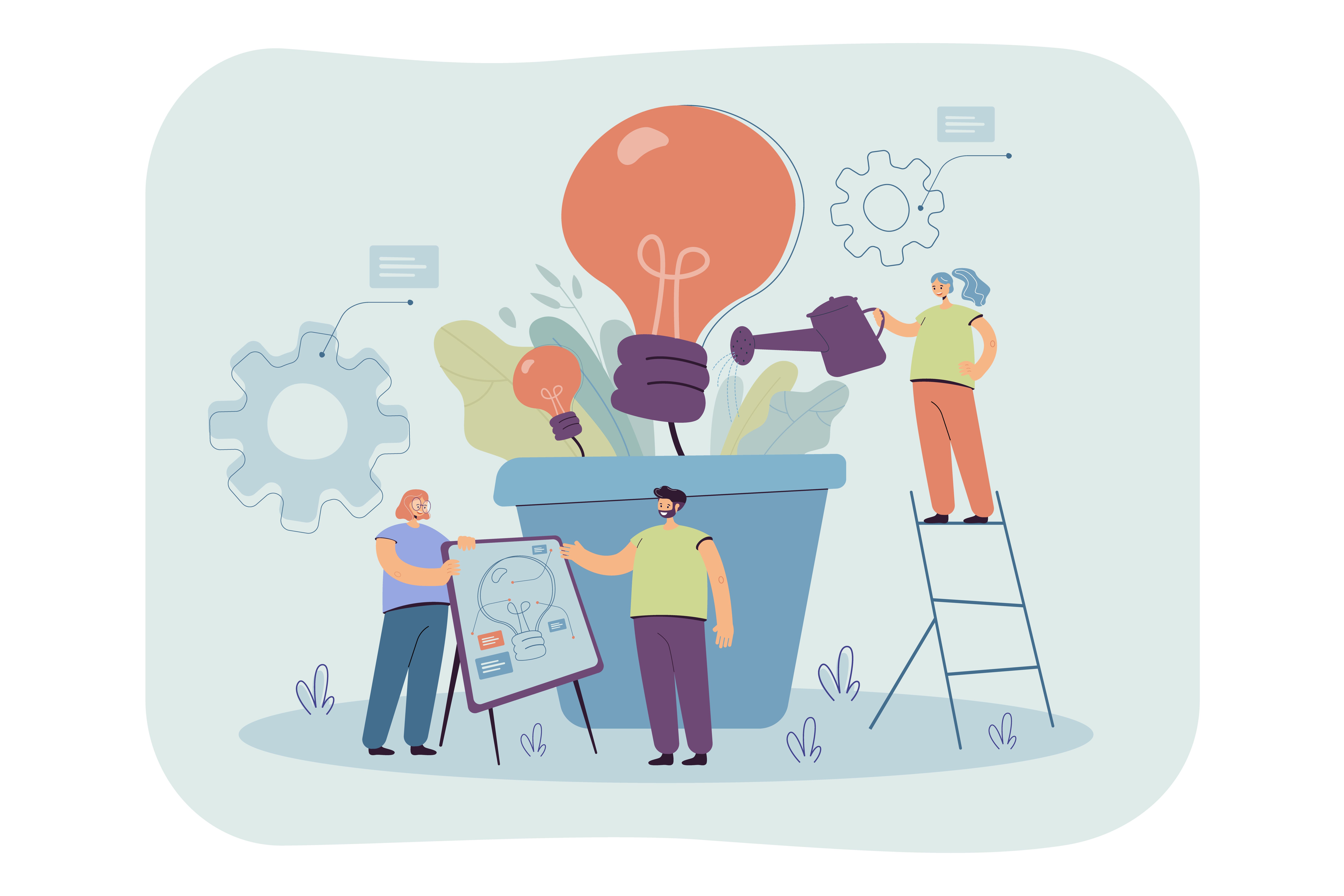

Change Management Blog
Unveiling the Power of Change Management in Project Success
February 1, 2024
Talal I. El-Assaad: Enterprise Transformation, CX Mastery & Go-to-Market Leadership
Time to Read: 6 Min

Strategic Cost-Benefit Analysis:
Unveiling the Power of Change Management in Project Success
The rationale is solid: projects and initiatives ultimately necessitate individuals to alter their work habits. Research consistently shows that the likelihood of success increases with effective Change Management. However, some organizations remain hesitant to fully invest in and commit to Change Management. Many practitioners still face challenges when justifying investments in time, resources, and budget for Change Management. Notably, Prosci's benchmarking research revealed that 76% of participants had to provide justification for Change Management to leaders.
How can this challenge be overcome? One of the most transparent ways to justify Change Management in terms leaders understand is through cost-benefit analysis.
Cost-Benefit Analysis Overview
The cost-benefit analysis for Change Management is akin to those conducted by organizations routinely. The goal is to demonstrate the relationship between the costs of managing the people side of change and the benefits derived from applying a structured approach to enable impacted employees to engage, adopt, and use the change. Buy-in and investment in Change Management will only be received if it can be shown that the real and tangible benefits outweigh the costs.
While the research findings on the cost of Change Management are straightforward, the benefits side of the equation can be tricky to discuss. To enhance the cost-benefit analysis, you can draw upon five specific benefit perspectives to make a case for Change Management:
3X People-Side ROI Factors:
Accelerated adoption, increased ultimate utilization, and enhanced proficiency are key contributors to project ROI, all facilitated by Change Management.
Cost Avoidance:
Ineffectively handling change incurs expenses for both the project and the organization. Change Management serves as a strategical tactic for avoiding these costs.
Watch the webinar and Learn to quantify and communicate the value of Change Management for achieving successful organizational change.
Risk Mitigation:
When change is inadequately handled, there are risks to individuals, the project, and the organization. Change Management serves as a tool to mitigate these risks.
Benefits Realization Insurance:
Evaluate the extent to which the project's value relies on individuals altering their job roles. Change Management serves as your insurance for realizing these benefits.
Probability of Meeting Objectives:
Projects that implement effective Change Management are more prone to achieving objectives, adhering to schedules, and staying within budget. With Change Management, meeting objectives is increased.
Change Management Costs
Applying Change Management to a project involves time, energy, and resources. According to Prosci research, the main costs of Change Management are:
Change Management resources (people)
Training
Communications
Travel
Time
Change Management materials.
In addition to the main costs elements, additional costs included:
Consultant fees
General expenses
Event costs (e.g., workshops, group meetings, "lunch and learn" events, road shows, and town hall meetings)
Reinforcement and recognition costs
Benefits of Change Management
Perspective 1 - 3X People-Side ROI Factors
Change manifests at the individual level. Prosci's ROI of Change Management model centers on three factors related to individuals, influencing the value that a change brings to the organization.
Questions to evaluate these factors for your project encompass:
Speed of adoption – How rapidly do individuals embrace the new processes or behaviors?
Ultimate utilization – What is the extent of employees who successfully embraced the change (and how many did not)?
Proficiency – How adept were employees at implementing the new processes or behaviors?

These three factors are specific to the nature of your particular change but have universal implications for influencing project ROI. Unfortunately, many project teams tend to make implicit assumptions or overlook the human aspect of their change. For instance, a team supporting a substantial IT implementation introducing new interfaces might assume, albeit erroneously, that all users (achieving 100% ultimate utilization) will seamlessly and expertly use the system from the day it goes live (experiencing an instantaneous speed of adoption).
When incorporating the three people-side factors into the business case and ROI calculations, you can underscore the significance of Change Management. Moreover, these factors can be employed in a sensitivity analysis to generate numerical values reflecting the impact of the people-side elements on ROI. For example, if the speed of adoption extends beyond six weeks instead of the planned three, and 15% of users do not adopt the system, the ROI for the project would be X instead of Y.
The 3x ROI Human Factors Can Assist You In:
Clearly defining the specific changes needed by individuals at the initiation of a project or initiative.
Assess the consequences of slower adoption rates, reduction in overall utilization, and lower proficiency. Position Change Management. as a strategic tool that delivers tangible business results.
Strengthen the conversation and capture assumptions pertaining to the human side of change much early in the process.

Perspective 2 - Cost Avoidance:
Substantial and measurable expenses are accrued when changes are inadequately handled, impacting both the project and organizational domains. Beyond the additional costs of rectifying issues related to the human aspect that may arise if Change Management is disregarded initially, the organization also misses out on the expected value from the project. Embedding a Change Management-ready Culture proves to be an efficient strategy for avoiding costs in our projects.
Some of the most captured costs to the Organization when Change is poorly managed:
|
|
| |
|
|
|
|
|
|
And the costs incurred to the project if Change is Poorly Managed:
|
|
|
|
|
|
|
|
|
|
And the cost implications if the Change is not implemented:
|
|
|
|
|
|
Moreover, when a project fails to yield results, the organization forfeits the investment made in it. Effective application of Change Management can mitigate or avert these costs. While some expenses, like declines in morale, are challenging to quantify, others are more tangible and can be easily measured.
Perspective 3 - Risk Mitigation:
An alternative viewpoint, akin to the cost-avoidance stance, involves delineating the potential risks linked to the people side of change for both the project and the organization. Project risk management is a well-established discipline.
If your organization routinely conducts thorough risk assessments for projects, you can strategically integrate "people-side risk" among other risks, including financial, technology, schedule, and dependency risks. When planning a project with a substantial "people-side risk" element, adopting a structured approach to Change Management serves as an effective risk-mitigation technique.
Perspective 4 - Benefits Realization Insurance:
A substantial portion of the anticipated value derived from pivotal and strategic organizational changes hinges on how individuals perform their roles. Employing a systematic Change Management approach is akin to securing an insurance policy against the project's goals and objectives, particularly those contingent on employee adoption and usage.
In this context, showcasing the value of Change Management aligns with the broader objectives the project seeks to accomplish. The project's objectives, as delineated in the project charter, business case, or project plan, serve as a foundational reference. For each objective, contemplate whether achieving it relies on people executing their roles differently. While certain changes, such as reducing maintenance contract costs for new technology, may not be people-dependent, many objectives are intricately linked to the human aspect of change.
To delve deeper, pose the subsequent query: "What percentage of these benefits stem from people doing their jobs differently?" This represents the portion of the benefit that can be safeguarded by implementing a robust Change Management approach, highlighting the extent of benefit left unprotected by not investing in Change Management.
Perspective 5 - Probability of Meeting Objectives:
The ultimate benefit perspective, the probability of meeting objectives, is linked to a burgeoning body of data indicating that more proficient Change Management significantly enhances the likelihood of achieving intended results.
The graph presented below illustrates the correlation between the effectiveness of Change Management and the attainment or surpassing of objectives. Crafted using data collected from numerous Change Management professionals worldwide, this correlation underscores that projects with outstanding Change Management practices are seven times more likely to meet objectives compared to those with inadequate Change Management. Even projects with moderate Change Management were three times more likely to succeed.
Unlocking the Potential of Cost-Benefit Analysis
When talking about the value and significance of Change Management, leveraging a cost-benefit analysis proves to be a robust framework. While these advantages may not follow a strict sequence, strategically choosing the most advantageous benefit perspectives tailored to your specific audience, change initiative, organization, and cultural context empowers you to construct a compelling and potent argument for Change Management.
By addressing the specific concerns of your audience and illustrating the connection between Change Management and success via a cost-benefit analysis, you can effectively tilt the balance to secure commitment and investment in Change Management.

